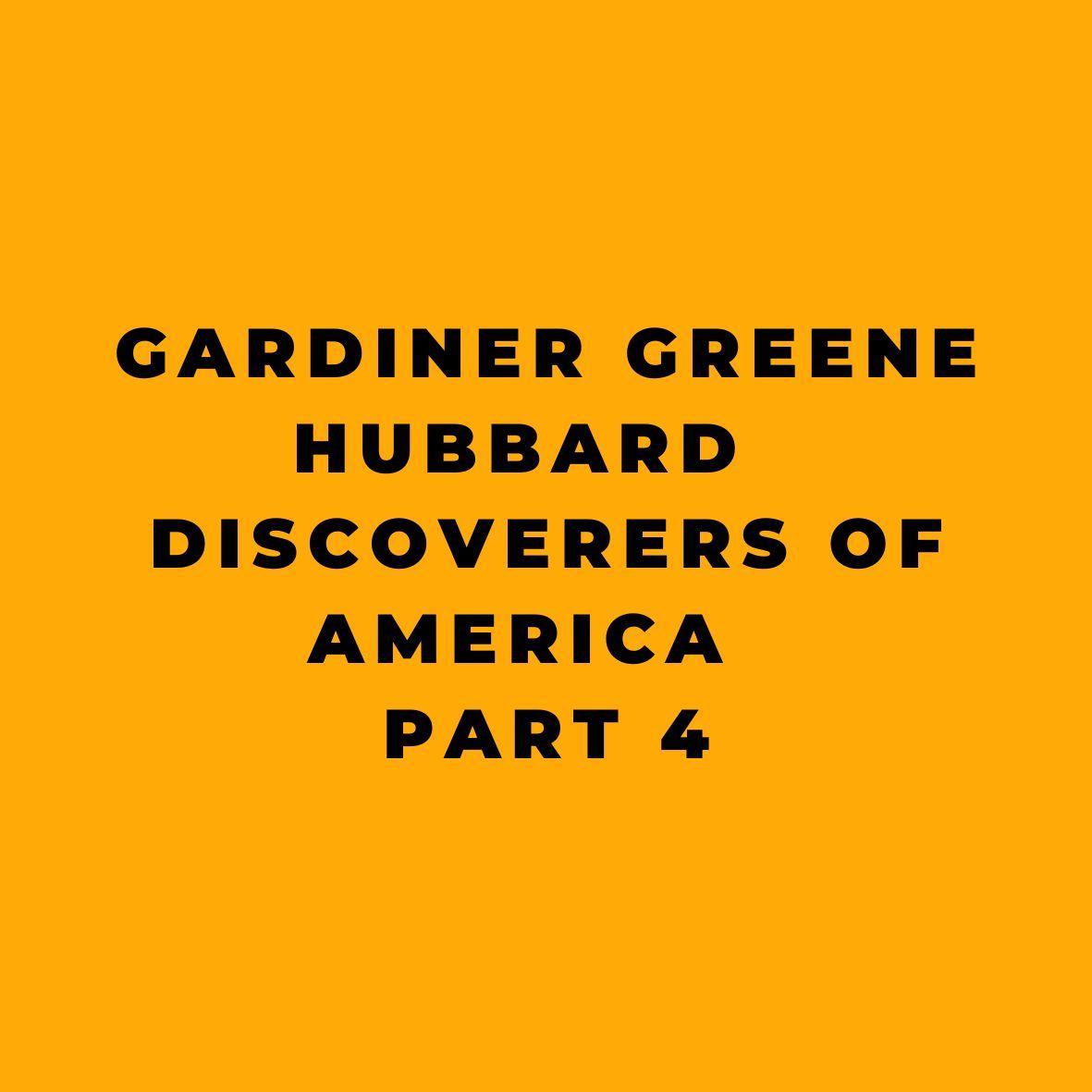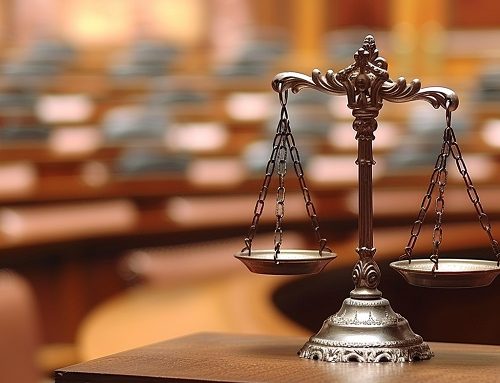DISCOVERERS OF AMERICA – ANNUAL ADDRESS BY THE PRESIDENT – HON GARDINER GREENE HUBBARD
(Presented before the Society January 13, 1893)
This is Part 4 of 4.
Part 1, Part 2, Part 3, Part 4
Nearly one hundred years elapsed from the first voyage of Columbus to the voyage of Drake, each of whom vainly sought a way through America – the one from the Atlantic to the Pacific, the other from the Pacific to the Atlantic.
Thus, before the end of the sixteenth century, the whole continent of America, save the arctic border, had been circumnavigated and the southern part of it colonized; but it was not until after another century and another age that another race found homes for themselves on the coast of North America.
The voyages of the discoverers of America gradually became known to the public. It is interesting and instructive to examine the early maps representing these voyages to see how slowly the geography of the new world became known.
On the Zeni map of 1400, published in 1558, Greenland is connected with Norway. The same connection is shown in the Claudius Clavus map of 1427, in the Portuguese mappemonde of 1490, and even in the Ptolemy map by Waldseemüller in 1513; while in the map of Europe at the end of the “Chronicon Nurembergense,” 1493, Greenland is shown as an isthmus connecting Norway and Sweden with Russia.
One of the first maps drawn after the discovery of America was that made in 1500 by Juan de la Cosa, a celebrated pilot and cartographer who accompanied Columbus on his first and second voyages and Vespucius on his first voyage. It delineated parts of the eastern coasts of South America and North America, showing by the flags of Spain, England and Portugal the coast explored by the ships of each country. On that part of the map between North America and South America, Columbus is drawn as Saint Christopher bearing the Christ child on his shoulders. The figure thus fulfills a double purpose of honoring Columbus and covering the undiscovered portions of the continent (plate 4*).
On the Cantino chart of 1501-1502, South America is delineated as surrounded by water from about 30° south to the isthmus of Darien, then Cuba, the West India islands, and the coast of North America from 37° to 54° north. There is no land connecting North America and South America.
On the Ruysch map of 1508, two years after the death of Columbus, Greenland and Labrador are connected with Asia. The new world appears as an island near the equator (plate 5†).
On the Lenox globe, so-called, made about the year 1510, now in the Lenox library in New York, South America is a large island, while North America is represented by a number of detached islands.
On the map attributed to Leonardo da Vinci, 1514, the name “America” appears for the first time and is given to a large island on the equator. Florida is the name of another island northwest of “America.”
On the Schöner globes of 1515 and 1520 North America and South America are two islands, while the southern part of “America” is separated by straits from an Antarctic continent, and on the globe of 1520, the city of Mexico is identified as the Quinsay of Marco Polo. On the Hauslab globe of 1516-1517, the name “America” is given to South America. Straits connecting the Atlantic and Pacific oceans separate North America from South America.
On the Maiollo map of 1527 South America, including the isthmus of Panama, appears an island separated by the “Straito Cubi toro” from North America. On the Münster map of 1532 South America is an island with a strait between it and Cuba, leading into the Pacific Ocean, while on the Münster map of 1540 North America and South America are connected by an isthmus.
On the Paris gilt globe, about 1525, Greenland is an island, Labrador and “Terra Florida” form parts of Asia, while the Gulf of Mexico is fairly delineated, with Cathay on its western shore. The Schöner globe of 1533 is much the same in the middle latitudes, while the Paris wooden globe, about 1535, represents Greenland, Labrador, and Florida as belonging to Asia, the Gulf of Mexico as the “M[are] Cathairum,” and South America as a peninsular extension of the Asiatic mainland.*
On the map of Orontius Finæus, 1537, thirty years after the death of Columbus, Greenland is an island, Labrador and the coast of North America are attached to the northern part of Asia, Cathay appears on the Gulf of Mexico, and South America is connected with the southeastern part of Asia. This map was made nearly twenty years after Magellan had circumnavigated the world.
On the Gastaldi carto marina of 1548 Greenland is connected with Norway on the east and Labrador with America on the west.
North America and South America are connected, and the Austral continent is shown south of the straits of Magellan. There was no map published until after the sixteenth century that gave a correct delineation of the seacoast of America. It is no wonder that Columbus never comprehended the nature or extent of his discoveries. The more we study the history and geography of the times, the influence of the church, the difficulty of determining longitude, the ignorance of the movements of the mariners’ compass and of the distance to Cipango, the greater will be our admiration for Columbus. Yet a recent writer speaks of the discovery of Columbus as a blunder, and others say, as if in disparagement of his work, that he knew of the discoveries of the Northmen and was only following their track; that the chart of Toscanelli which Columbus took on his first voyage indicated clearly his route; that Columbus died in the belief that he had discovered Cipango and Cathay, never realizing that it was the new world, and that Americus Vespucius is entitled to the greater credit.
Let us hear the opinion of a contemporary of Columbus, Sebastian Cabot: “When news was brought that Don Christopher Colon, the Genoese, had discovered the coasts of India, whereof was great talke in all the court of King Henry the VII, who then reigned, all men with great admiration affirmed it to be a thing more divine than humane to saile by the west into the easte, where the spices growe, by a chart that was never before knowen.”
It is very doubtful if Columbus knew anything of the voyages of the Northmen, nor would such knowledge have been of much value, for Greenland was then believed to be a part of Europe and joined to Norway. If Columbus had known of the discoveries and sought the countries they had found, he would have sailed northwestward instead of westward.
Many before Toscanelli and Columbus believed the world to be round, and that by sailing westward Asia might be reached. Columbus not only believed but proved it. He made no blunder, for he sought land the other side of the Atlantic, and he found it. Vespucius knew little more than Columbus of the new world, and never realized that North America and South America were one continent. The maps show that learned geographers long after the discoveries of Columbus, Vespucius, Cabot, and Magellan did not understand the geography of the new world.
All voyages before that of Columbus had been coasting voyages, the sailors keeping in sight of land. Columbus pushed out into the unknown and trackless ocean, leaving the land far behind. Good seamen were unwilling to undertake so terrible a voyage, so convicts were obtained, liberated from prison on condition of sailing with Columbus. A brave, resolute, and self-contained spirit was necessary to command such a crew on such an expedition. New wonders startled him each day. The magnetic needle, instead of pointing steadily northward, swerved toward the west. The wind for many days blew unvaryingly from the east, and the sailors thought it would prevent them from returning. The Saragossa sea puzzled them. They daily grew more timid as they sailed further and further into the ocean, though they had sailed much further than they supposed. No voyage like that was ever made before, and none like it can ever be made again, for the great discoverer solved the problem and reached the east by sailing west.
How like a tragedy the life of Columbus! Twelve years of preparation and waiting, five in Portugal and seven at the court of Isabella; his demand; its rejection; his recall; his departure from Palos with three small vessels; his triumphant return after the discovery of America, admiral and governor; sent home in chains; his death, poor, unknown, and forgotten. Contrast this with what has recently taken place at Palos. Last September (1892), the greatest warships of the world from Spain, Italy, Germany, Great Britain, and the United States, propelled by a power unknown to Columbus, escorted from the harbor of Palos three little ships, two without decks, fashioned after the ships of Columbus.
At the time of Columbus’ death, none to honor him; now all Europe and the new world unite in rendering him the most excellent homage ever paid to man!
This is Part 4 of 4.
Part 1, Part 2, Part 3, Part 4
References:
- Hubbard, Gardiner Greene. Discoverers of America: Annual Address by the President, Hon. Gardiner G. Hubbard. National Geographic Society, 1893.










